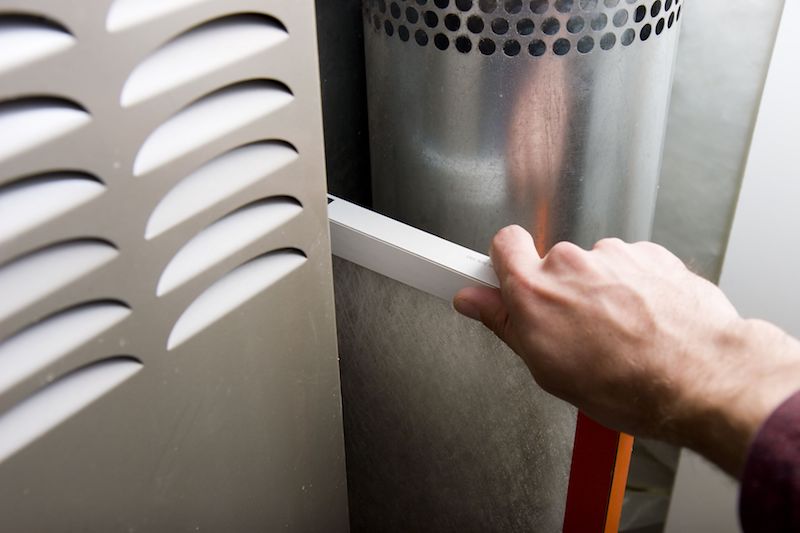
If you’re unsure whether your Moline residence has bad indoor air quality (IAQ), it likely does.
We are indoors a lot. In reality, we’re in a building up to 90% of the time, according to the U.S. Environmental Protection Agency. And the air inside residences could be 2–5 times more contaminated than outdoors, which might create long-term health concerns.
Most Common Sources of Poor IAQ
We’ve made a list of the most frequent origins of poor IAQ, the issues they cause and how you can fix these indoor air pollutants. If you’re worried about the air inside your home, we suggest talking with a expert like J.L. Brady Company LLC about which solutions are ideal for your family.
Volatile Organic Compounds
Volatile organic compounds, or VOCs, are fumes released by regular household items.
They’re found in paint and stains as well as:
- Furniture
- Carpet
- Building materials
- Cleaning products
- Cosmetics
- Air fresheners
- Candles
When these chemicals accumulate indoors, they may irritate your eyes, nose and throat. They can also result in headaches and nausea. Regardless of whether your house is in a rural or industrial area, an EPA study found indoor levels of these pollutants can be 2–5 times higher than the air outdoors.
Always adhere to the manufacturer’s instructions when using paint or cleaning supplies. Cracking a window can help vapors disperse faster.
Air purification systems can also better your air. This equipment partners with your heating and cooling equipment to improve indoor air. When hunting for a model, ensure it’s specifically created to eradicate VOCs.
Dust and Pet Dander
Dust and pet dander can trigger health problems like asthma and allergies, especially when it constantly gets moved by your home’s comfort unit. While you can vacuum more frequently and install an improved air filter, an air filtration system may be a better solution.
This unit hooks to your HVAC equipment to provide strong filtration. Some kinds have hospital-level filtration for removing particles and bioaerosols.
Persistent Odors
Modern houses are tightly sealed to increase energy efficiency. While this is great for your utility bill, it’s not ideal for your IAQ.
Stuffy odors can stay around for a greater amount of time as your home is pulling in less fresh air. Because keeping your windows open throughout the year isn’t doable, here are two methods you can make your indoor air smell cleaner.
An air purification system is placed in your ductwork to neutralize odors before they are redistributed. Find one with a carbon filter and the ability to eliminate damaging VOCs. These systems can also help keep your family healthy by getting rid of most bacteria and normal allergy triggers like pollen and mold spores.
A ventilation system removes stuffy indoor air and substitutes it with clean outdoor air. There are two kinds of units (heat recovery and energy recovery), so check with our professionals for more details on which kind is right for your home.
Unsteady Humidity
It’s essential your home’s humidity remains even. Air that’s too humid can cause mold, while dry air can cause respiratory concerns.
Our technicians suggest 40–50% for ideal comfort. To keep yours in balance, think about getting a whole-home humidifier or whole-home dehumidifier with your HVAC system.
In place of having to lug a humidifier from room to room, this equipment delivers balanced humidity across your house.
Carbon Monoxide
Carbon monoxide is colorless gas you can’t smell. It’s caused by insufficient combustion in fuel-burning appliances, like gas heating systems, water heaters or fireplaces.
It presents a serious health risk. In low levels, it can lead to flu-like symptoms like headaches and nausea. It may be fatal in big concentrations.
We recommend yearly furnace maintenance to double-check your equipment is running properly. This service allows our technicians to pinpoint troubles before they start, including malfunctions that can cause carbon monoxide leaks.
The best method to keep your house free of carbon monoxide is to install detectors. These alarms need to be on every floor close to bedrooms and living areas.
Improve Your Home’s Air Quality with the J.L. Brady Company LLC Experts
Informed that your house has poor air quality but not sure how to make it better? Or unsure which product is right for you? Give our friendly HVAC specialists a call at 309-517-7511 or contact us online now. With free estimates and pro assistance, we’ll help you choose the best option for your home and budget.




